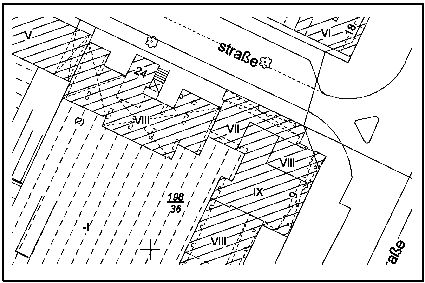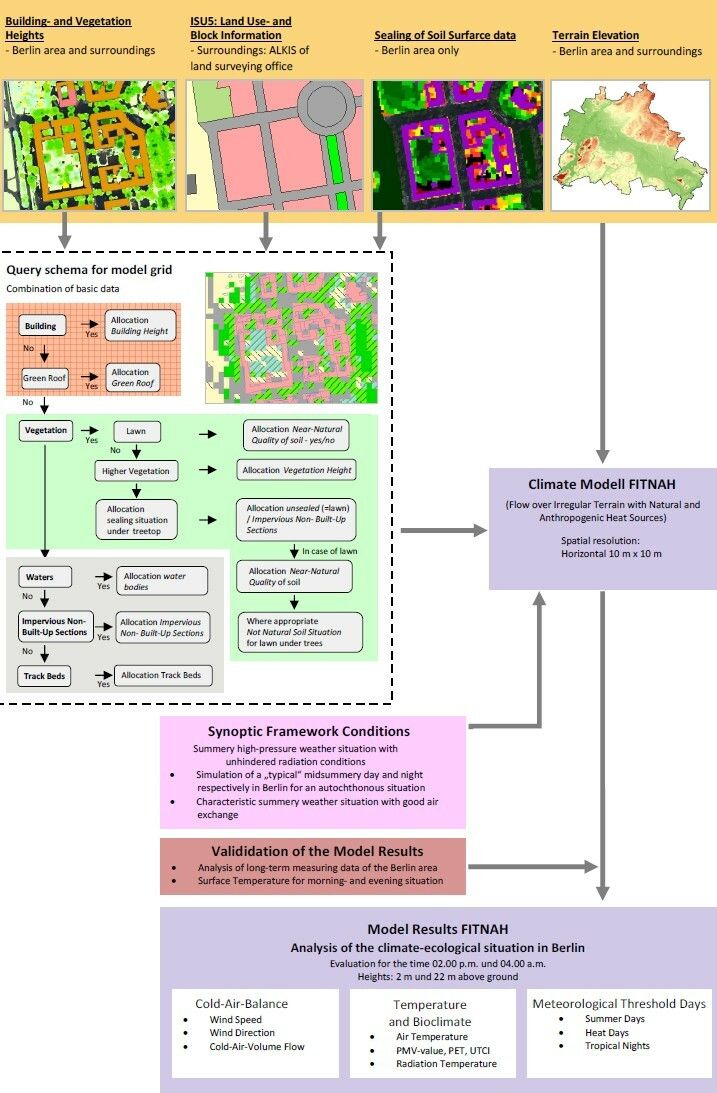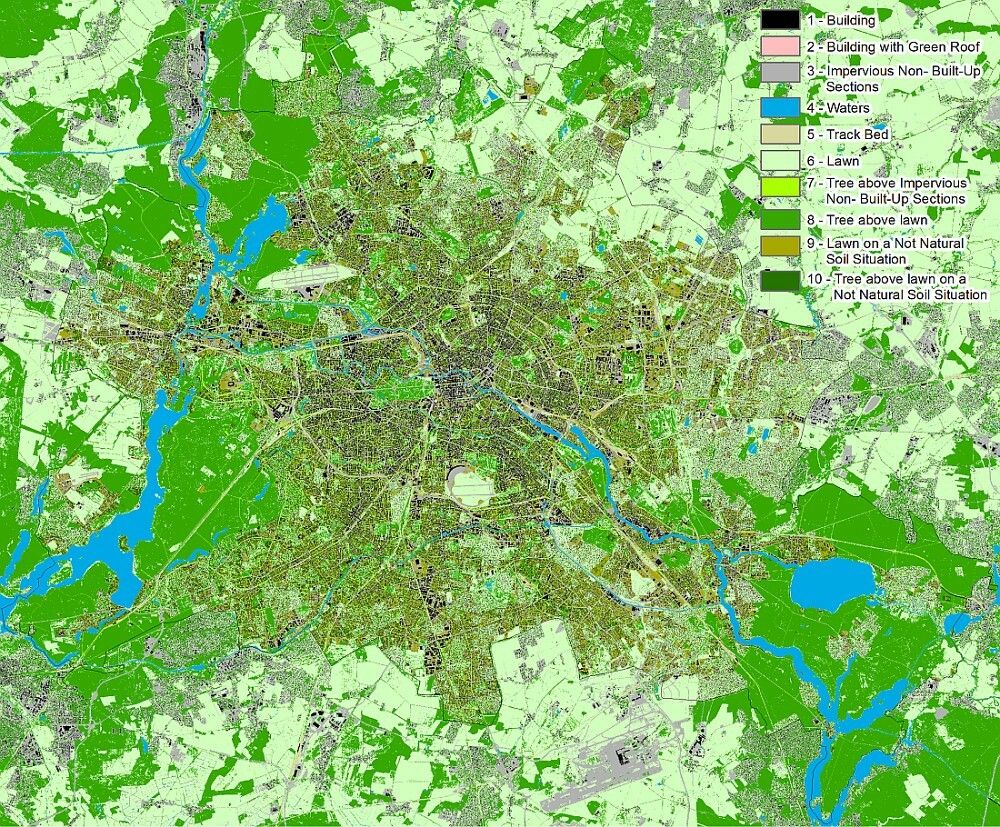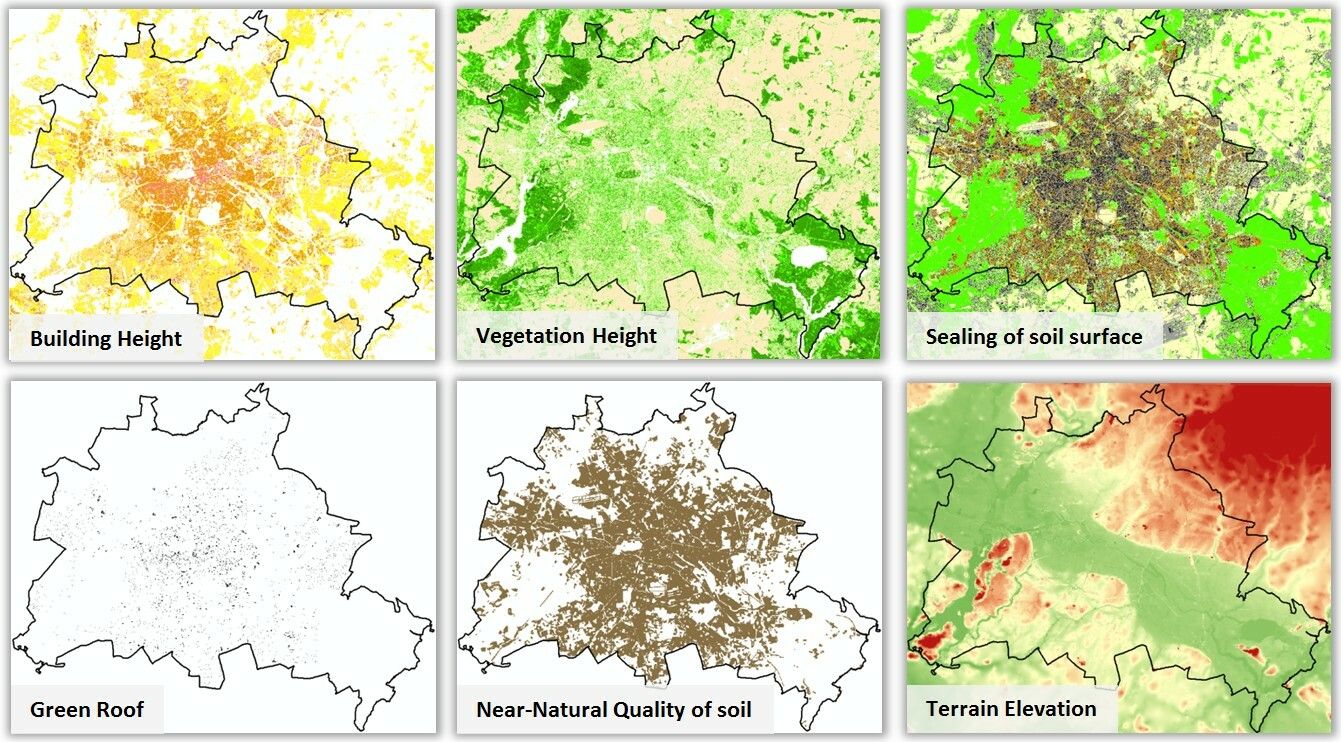On the whole, the application of the climate model Berlin in its current version, is based on the following components building upon one another:
- the evaluation of long-term operation of measurement stations in Berlin and Potsdam as the basis for calibrating the model results (SenStadtUm 2015a)
- extensive analysis steps for working out an established database, as well as
- the preparation of three planning advice maps that supplement one another (SenStadtUm 2016).
Following data bases were used for conducting the process steps 2 and 3:
- GEO-NET Umweltconsulting GmbH, Hanover: GIS-based modelling of parameters relevant for urban climate based on high-resolution building and vegetation data; EFRE project 027 Urban climate Berlin (SenStadtUm 2015),
- Data of the Urban and Environmental Information System (ISU) of SenStadtUm, III D 1, version 31.12.2010:
- Block map 1: 5,000 (ISU5_UA),
- Land Use data (SenStadt 2010),
- Criteria for evaluating the soil functions, map of closeness to nature (SenStadtUm 2013),
- Uncorrected degrees of sealing (grid data) – intermediate result of the rule-based classification (SenStadtUm 2012),
- Building and vegetation heights (SenStadtUm 2014),
- Ground level (DGM5) (SenStadt 2010a),
- Automated land register map Berlin (ALK), version 01.06.2014 (SenStadtUm 2015c),
- Locations of the social infrastructure (Planning area related information system for monitoring and analysis (PRISMA) (SenStadtUm 2015c) as well as Regional Office for Health and Social Affairs (LAGeSo) (LAGeSo 2014),
- Detailed map of the Berlin’s network of roads, version 11/2014 (SenStadtUm 2014a),
- State of Brandenburg:
- ALKIS database Building and actual use, version 10/2013 (LGB 2013),
- Ground levels (DGM25) (LGB 2013a),
Model calculations use grid-based representations of input variables. For providing the model input data, therefore, the area geometry had to be transferred to 10 m x 10 m grid cells each with a uniform usage structure. This was done in a multi-staged query cascade, which is shown in Fig. 5. In partial areas, the described model input data were supplemented by usage information of the Urban and Environmental Information System (ISU) or by the vector data of the block map 1:5,000 (ISU5_UA 2010). This mainly concerns the information about water bodies, for road space and track areas. While high resolution building and vegetation data can also be used for the neighbourhood of Berlin, the sealing information was present only for the urban area of Berlin. More information about the interface structure could be taken from the ALKIS database of National Survey of Brandenburg.




